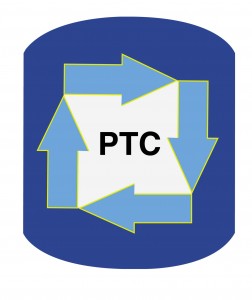Four years ago, we highlighted a patent that used tetrabutylammonium acetate to capture carbon dioxide (see http://phasetransfercatalysis.com/ptc_catalyst/tetrabutylammonium-acetate-for-co2-capture/). This month a patent application was published (https://www.freepatentsonline.com/20230330624.pdf) entitled “Use Of Carboxylate Compound As Absorbent For Capturing Carbon Dioxide.”
Ideally, a quat carboxylate compound forms a “conjugate” with carbon dioxide that has appropriate hydrophilicity to be soluble in water at normal temperature, and can be precipitated from water after absorbing carbon dioxide. When the quat carboxylate compound forms the “conjugate” it should be stable to water after absorbing carbon dioxide.
This patent application publication published this month compares the effectiveness of the following quat salts: tributylhexyl phosphonium 2-ethylhexanoate, tetrabutyl phosphonium 2-ethylhexanoate, tributyloctyl phosphonium 2-ethylhexanoate, tributyldecadecyl phosphonium 2-ethylhexanoate, tributyldodecyl phosphonium 2-ethylhexanoate, tributyltetradecyl phosphonium 2-ethylhexanoate, tributylhexadecyl phosphonium 2-ethylhexanoate, tetrabutylammonium 2-ethylhexanoate, triethylbutylammonium 2-ethylhexanoate, tributylhexyl ammonium 2-ethylhexanoate, tributylhexyl phosphonium 2,2-dimethylbutyrate, tributylhexyl phosphonium 2-propylpentanoate, tributylhexyl phosphonium 2,2-dimethylhexanoate, tributylhexyl phosphonium 2-propylhexanoate, tributylhexyl phosphonium 2-ethylheptanoate, tributylhexyl phosphonium cyclohexyl formate and tributylhexyl phosphonium n-octanoate.
Carbon dioxide absorption with these quat salts ranged from about 10 mole% to 110 mole%. The highest performing quat salt was tributyloctyl phosphonium 2-ethylhexanoate.
The procedure was as follows: 2 mmol of quat salt and 40 mmol of water (0.72 g) were added in a glass bottle, a carbon dioxide balloon was connected to make the solution in carbon dioxide at one atmosphere. After stirring at 25° C. for 12 hours, the system was divided into an organic phase and an aqueous phase. The balloon was taken off and the gas carbon dioxide on the upper part of the solution in the bottle was replaced with air, then titrated with sodium hydroxide solution (0.2 w%), phenolphthalein was used as the indicator, and the carbon dioxide absorption amount was 2.2 mmol for tributyloctyl phosphonium 2-ethylhexanoate and 0.22 mmol for tributylhexyl phosphonium 2,2-dimethylbutyrate.

